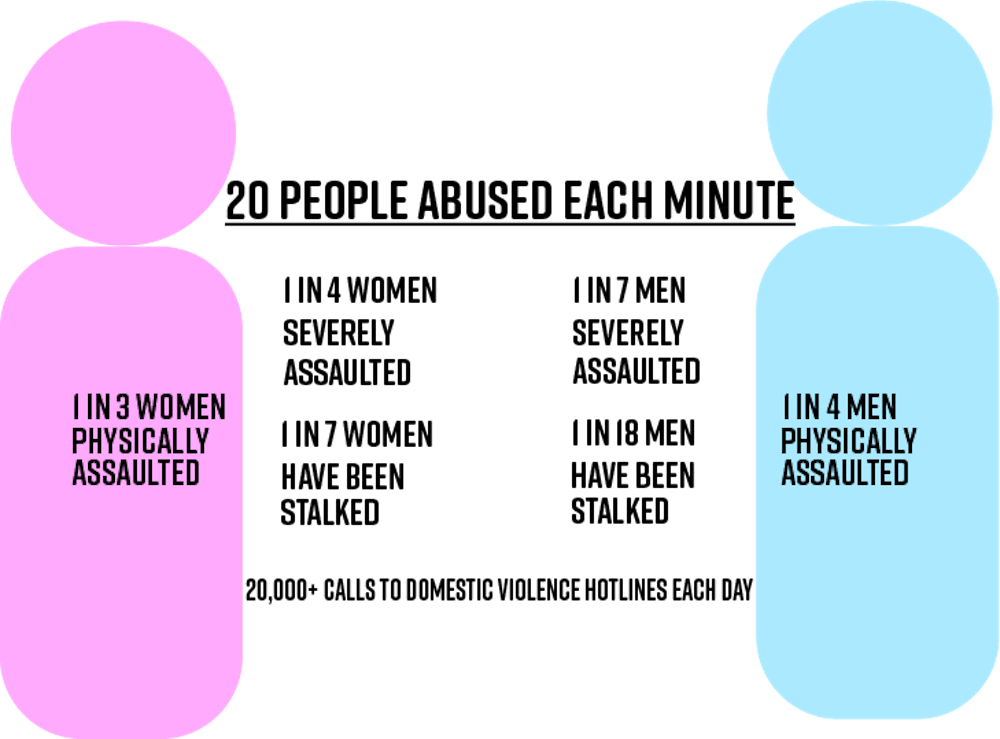As October draws to a close, so does Domestic Violence Awareness Month. However, this is an important social issue that should receive attention year round.
ASU provides online and on-campus resources for victims of domestic abuse or sexual assault that also aim to raise awareness about student safety.
More people need to know about the severity of domestic violence and how it is evolving with each generation.
The U.S. Department of Justice defines domestic violence as a “pattern of abusive behavior in any relationship that is used by one partner to gain or maintain power and control over another intimate partner.”
Although many people think of domestic violence as purely physical abuse, this is not always the case. Domestic violence is not always physical — it can entail any action that would threaten or bring harm to someone in a relationship.
In 2010, there were 25,376 domestic violence arrests made in Arizona. Over 10 million people are domestically abused per year in the U.S.
Close to half of rape victims (male and female) know their rapist before they are assaulted, and among these victims 45.4 percent of women and 29 percent of men were raped by an intimate partner.
College-aged women are the most common victims of domestic abuse.
“Even though when you ask people what they think about domestic violence or intimate partner violence, they think of physical violence," Mindy Mechanic, assistant professor of psychology at California State University, Fullerton, said. "Emotional and psychological abuse tends to be the most prevalent and that there are high rates of sexual coercion and other forms of forced sex in the forms of a relationship.”
About 48.4 percent of women and 48.8 percent of men when dealing with an intimate partner have encountered “psychologically aggressive behavior."
Twenty-nine percent of rapes of adult women are committed by a significant other. The rape kit backlog prevents most cases from going to trial inhibiting the prosecution.
“There’s actually several other dimensions to partner abuse so those would generally fall under the categories of emotional or psychological abuse, sexual coercion or sexual violence and stalking and harassment types of behaviors,” Mechanic said.
With smart phones, tablets and laptops, stalking no longer needs to take place in person — the perpetrator can do it virtually without the victim’s knowledge or consent. College-aged students have the highest likelihood for becoming victims of stalking.
If you don’t feel safe disclosing the abuse you’re facing in a relationship or you’re not quite certain if they are red flags, there are apps that can index the levels of abuse or alert trusted loved ones.
“The red flags that are important indicators that people need to be mindful and attentive to are usually the more subtle types of things that can be markers of abuse and those are things that speak to control and can take the form of jealousy, monitoring, isolation and domination,” Mechanic said.
Considering the widespread problem of domestic violence, there needs to be more than one month a year dedicated to awareness.
Not only do students need more awareness of the issue itself, but they also need to be aware of their options and resources.
There are countless local resources that should be utilized to help victims of domestic abuse.
The Arizona Coalition to End Sexual and Domestic Violence and Maricopa County Centralized Screening has partnered with Lyft in order to accommodate victims of domestic abuse with free Lyft rides throughout the month of October.
Domestic violence is serious and multi-faceted, and awareness should be spread throughout the entirety of the year.
Reach the columnist at hncumber@asu.edu or follow @hncumber on Twitter.
Editor’s note: The opinions presented in this column are the author’s and do not imply any endorsement from The State Press or its editors. Want to join the conversation?
Send an email to opiniondesk.statepress@gmail.com. Keep letters under 500 words and be sure to include your university affiliation. Anonymity will not be granted. Like The State Press on Facebook and follow @statepress on Twitter.





